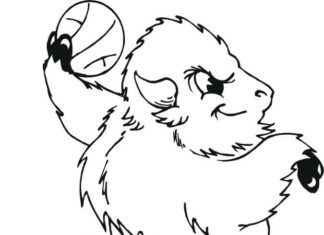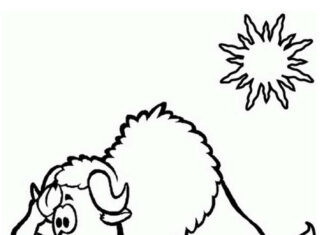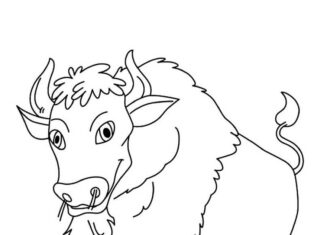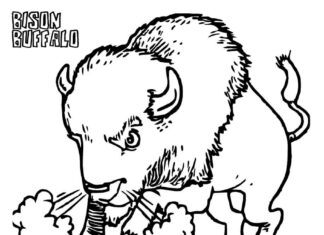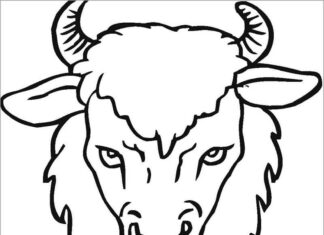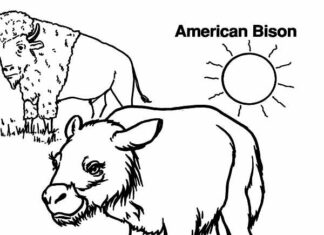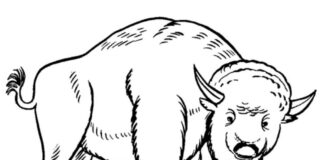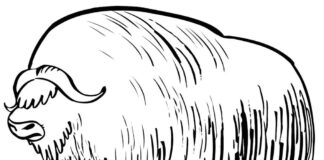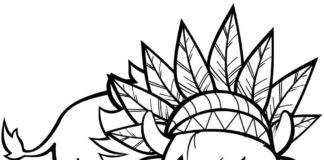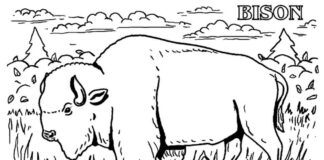The bison, also known as bison (American bison), is a large mammal of the bovine family (Bovidae) found in North America.
Bison Coloring Book
information
- Physical characteristics: Bison are among the largest land mammals in North America. Adult males can reach a weight of 900 to 1,100 kilograms, while females are slightly smaller. They have a distinctive neck mane and long, curved horns.
- Environment: Bison originally inhabited vast areas of North America, from prairies to mountains. Nowadays, their distribution area is greatly reduced and is mainly concentrated in protected areas and reserves.
- Population history: In the 19th century, the buffalo herd declined significantly due to uncontrolled shooting and hunting. It is estimated that the population dropped from millions to only a few hundred individuals. Thanks to conservation and reintroduction efforts, the bison population has increased, although it remains smaller than it once was.
- A sacred animal for indigenous peoples: The bison played a huge role in the culture and life of the indigenous peoples of North America. It was considered a sacred animal and provided meat, hides, bones and other raw materials that were used in various ways.
- Ecological significance: Bison play an important role in the ecosystem. By foraging on grasses, they help maintain the balance of vegetation and maintain biodiversity in the prairies.
- American bison vs. European bison: Although the American bison is sometimes referred to as "bison," it is a separate species from the European bison. Despite their similarities, differences in body structure, horn and habits separate the two species.
- Reserves and national parks: Thanks to conservation efforts, today the buffalo can be found in various reserves and national parks in North America, such as Yellowstone National Park.
- Ecological tourism: Some reserves and national parks offer so-called "buffalo safaris," an opportunity to observe these majestic animals in their natural habitat.
- Threats: Despite improvements in bison conservation, threats of habitat loss, competition with other species and diseases carried by domestic cattle remain.
- Symbol of North America: The American bison is considered a symbol of the wilderness of North America and represents the wildness and bravery of the continent's nature.
trivia
- North America's largest land mammal: The bison is considered the largest land mammal in North America and one of the largest in the world. Adult males can reach weights of over 1,000 kg.
- Size of the corners: The horns of the buffalo are impressive and curved. They can reach a length of up to 76 cm in males. In females, they are smaller and have a less spectacular appearance.
- Speed and agility: Despite their weight, bison are capable of quite a bit of speed. They can run as fast as 56 km/h and jump up to 2 meters high.
- Unique stomach: The bison has a specially adapted stomach that allows it to digest tough, fibrous vegetation. It can chew its food as many times as possible, allowing it to extract as many nutrients as possible from the plants.
- Close relationship with domestic cattle: Bison and domestic cattle share a common ancestor and are closely related. In fact, many breeds of domestic cattle share some traits from bison.
- Help for other animals: Mammalian predators, such as wolves and foxes, can use the bodies of bison after they die. This means that the food provided by bison can help sustain other species.
- Division into two species: American bison are divided into two subspecies: the American bison proper (Bison bison bison) and the mountain bison (Bison bison athabascae), which inhabits mountainous areas.
- Unusual wanderings: Bison can move long distances in search of food and better habitat. Their migrations can affect landscapes and ecosystems.
- The buffalo as a symbol: The American bison is the official national animal of the United States and symbolizes the wildness, strength and freedom of the wild areas of North America.
- Population recovery: Thanks to conservation efforts, the number of buffalo in some reserves and national parks has increased. This is an example of successful work to protect endangered species and restore balance to ecosystems.

